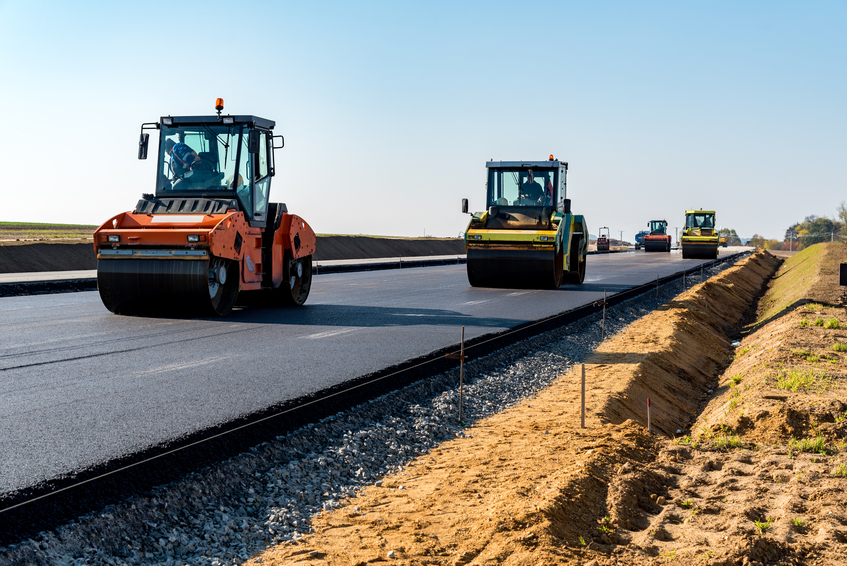Nevada Civil and Laws/Rules/Ethics 30 PDH Discount Package 1
Courses in this Package
Introduction to Shotcrete Applications (C04-002)
Low Impact Development Design Strategies (C07-006)
Groundwater Hydrology (C09-002)
Durability of Geosynthetics for Highway Applications (C01-018)
Concrete Removal, Repair and Maintenance (C06-002)
Engineering Laws, Rules, and Ethics for Nevada Professional Engineers (NV3-001)

This online engineering PDH course provides guidance on the selection, proportioning and application of shotcrete as a construction material. It explains the dry-mix process in which most of the mixing water is added at the nozzle. It also explains the wet-mix process in which all of the materials are mixed before entering the delivery hose.
This 4 PDH online course is applicable to civil, structural and geotechnical engineers, as well as design and construction personnel involved with the planning and design of structures using shotcrete.
This PE continuing education course is intended to provide you with the following specific knowledge and skills:
- Learning the different types of shotcrete and its applications
- Knowing the types and properties of material used in shotcrete
- Understanding the dry- and wet-mixing and proportioning process
- Understanding the pre-construction testing and evaluation process
- Placing, finishing and curing of shotcrete
- Maintaining and repairing surface defects of shotcrete
In this professional engineering CEU course, you need to review the U.S. Corps of Engineers Publication EM 1110-2-2005, "Standard Practice for Shotcrete".
Upon successful completion of the quiz, print your Certificate of Completion instantly. (Note: if you are paying by check or money order, you will be able to print it after we receive your payment.) For your convenience, we will also email it to you. Please note that you can log in to your account at any time to access and print your Certificate of Completion.

This online engineering PDH course describes the wide array of impact reduction and site design techniques that allow engineers and planners to create stormwater control mechanisms that function in a manner similar to that of natural control mechanisms.
The low-impact development (LID) approach combines a hydrologically functional site design with pollution prevention measures to compensate for land development impacts on hydrology and water quality. The primary goal of Low Impact Development methods is to mimic the predevelopment site hydrology by using site design techniques that store, infiltrate, evaporate, and detain runoff. Use of these techniques helps to reduce off-site runoff and ensure adequate groundwater recharge. Since every aspect of site development affects the hydrologic response of the site, LID control techniques focus mainly on site hydrology.
This 7 PDH online course is intended for civil and environmental engineers and planners as well as construction professionals who are interested in learning about low impact development design techniques and their applications.
This PE continuing education course is intended to provide you with the following specific knowledge and skills:
- Understanding low-impact development goals
- Understanding low-impact development site planning
- Understanding low-impact development hydrologic analysis
- Understanding low-impact development integrated management
- Understanding erosion and sediment control considerations for low-impact development
In this professional engineering CEU course, you need to review the course document titled "Low-Impact Development Design Strategies" prepared by the Prince George's County
Upon successful completion of the quiz, print your Certificate of Completion instantly. (Note: if you are paying by check or money order, you will be able to print it after we receive your payment.) For your convenience, we will also email it to you. Please note that you can log in to your account at any time to access and print your Certificate of Completion.

This online engineering PDH course presents an overview of the occurrence and movement of groundwater. Procedures for planning and managing a site characterization and modeling study are then presented. This is followed by chapters addressing the technical aspects of field investigative methods and computer modeling. A final chapter discussing the interaction of groundwater and surface water is then presented.
Since it is not possible to provide specific instructions and/or specific procedures that are universally applicable to every situation that may be encountered, this course emphasizes the use of sound judgment and the development of a good understanding of basic groundwater concepts rather than providing specific guidelines.
This 9 PDH online course is applicable to civil and environmental engineers, as well as design and construction personnel involved with the study and analysis of groundwater flow.
This PE continuing education course is intended to provide you with the following specific knowledge and skills:
- Occurrence and movement of groundwater
- Planning a groundwater investigation and modeling study
- Field investigative methods
- Computer modeling of groundwater flow
- Interaction between surface water and groundwater
In this professional engineering CEU course, you need to review the US Corps of Engineers Publication EM 1110-2-1421, "Groundwater Hydrology".
Upon successful completion of the quiz, print your Certificate of Completion instantly. (Note: if you are paying by check or money order, you will be able to print it after we receive your payment.) For your convenience, we will also email it to you. Please note that you can log in to your account at any time to access and print your Certificate of Completion.

This online engineering PDH course presents a study that addresses various aspects of geosynthetic durability to develop procedures that could be used to predict long-term strength losses of geosynthetics used in highway applications. These procedures are essential to designers for allowing tensile capacity for geosynthetics used primarily in mechanically stabilized earth (MSE) retaining walls, reinforced soil slopes, and foundation stabilization.
This study was initiated to allow voiced concerns that stress-cracking potential was not being considered in developing the allowable tension load capacity for design when using high-density polyethylene (HDPE) geogrids. Stress cracking is a potential mode of failure occurring in thermoplastic materials that are under a sustained stress significantly lower than the material’s room temperature yield strength, resulting in quasi-brittle fracture of the material. This is also known as slow crack growth and environmental stress cracking (ESC) when in contact with certain aqueous solutions.
This 1 PDH online course is applicable to all civil engineers, highway design professionals, transportation planners, material manufacturers and all personnel interested in learning about geosynthetics for highway applications.
This PE continuing education course is intended to provide you with the following specific knowledge and skills:
- Developing testing protocols necessary to quantify any strength reduction due to aging or stress mechanisms for geosynthetics
- Developing testing protocols for confined stress-strain testing, which could more accurately characterize key engineering properties
Upon successful completion of the quiz, print your Certificate of Completion instantly. (Note: if you are paying by check or money order, you will be able to print it after we receive your payment.) For your convenience, we will also email it to you. Please note that you can log in to your account at any time to access and print your Certificate of Completion.

This online engineering PDH course provides guidance on the removal methods of deteriorated concrete structures as well as guidance on materials and methods to repair or rehabilitate the structure. Guidance is also included on maintenance of concrete. A basic understanding of underlying causes of concrete deficiencies is essential to perform meaningful successful repairs.
This 6 PDH online course is applicable to civil, geotechnical and structural engineers, as well as design and construction personnel working on construction projects involving evaluation and repair of concrete structures.
This PE continuing education course is intended to provide you with the following specific knowledge and skills:
- Familiarization with concrete removal methods and preparation for repair
- Understanding the types of materials and methods for rehabilitation
- Understanding how to maintain concrete structures following repair
In this professional engineering CEU course, you need to review only Chapters 5, 6 and 7 of the US Corps of Engineers Publication EM 1110-2-2002, "Evaluation and Repair of Concrete Structures".
Upon successful completion of the quiz, print your Certificate of Completion instantly. (Note: if you are paying by check or money order, you will be able to print it after we receive your payment.) For your convenience, we will also email it to you. Please note that you can log in to your account at any time to access and print your Certificate of Completion.

This online engineering PDH course presents the laws and rules of ethics and professional responsibility governing the practice of engineering in the State of Nevada.
Excerpts from Chapter 625 of the Nevada Revised Statutes and the Nevada Administrative Code which relate to the rules of professional conduct, prohibited acts, as well as disciplinary and other pertinent regulatory provisions are presented in this course.
Engineering ethics is (1) the study of moral issues and decisions confronting individuals and organizations involved in engineering and (2) the study of related questions about moral conduct, character, ideals and relationships of peoples and organizations involved in technological development (Martin and Schinzinger, Ethics in Engineering).
Since engineers are faced with frequent moral and ethical dilemmas while practicing their engineering profession, this course will provide engineers with moral and ethical guidance in their decision making process. Most importantly, it will provide engineers with insight on how to conduct, respect and protect their engineering practice with the utmost professionalism.
This 3 PDH online course is applicable to Professional Engineers licensed in the State of Nevada who are required to demonstrate continuing professional competency in the Nevada Laws, Rules and Ethics as a condition of license renewal. For each renewal period, every licensee must complete thirty (30) professional development hours, at least two (2) of the 30 hours must be in professional ethics and one (1) of the 30 hours must be in the laws and rules regulating the practice of engineering in the State of Nevada.
This PE continuing education engineering course is intended to provide you with the following specific knowledge and skills:
- Familiarizing with the laws and rules regulating the practice of engineering in the State of Nevada
- Learning about engineering ethics, and the laws and rules of professional conduct and responsibility
- Understanding the role of the Nevada Board and its disciplinary authority
- Gaining an overview of ethical and disciplinary case studies and the corresponding penalties imposed by the Nevada Board
Upon successful completion of the quiz, print your Certificate of Completion instantly. (Note: if you are paying by check or money order, you will be able to print it after we receive your payment.) For your convenience, we will also email it to you. Please note that you can log in to your account at any time to access and print your Certificate of Completion.